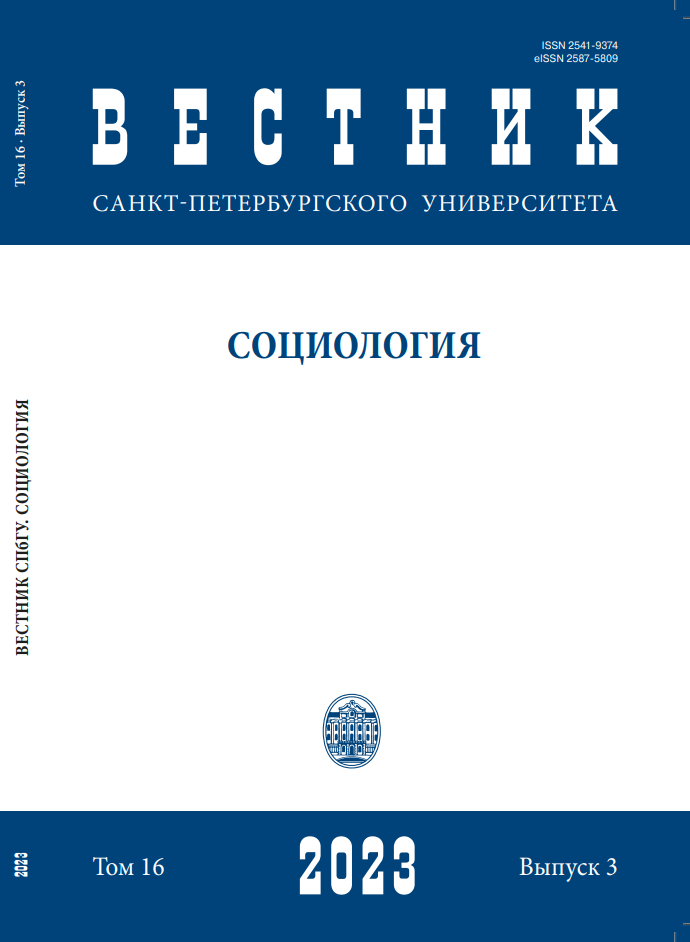Social control of the activities of children’s organizations in the context of modern security challenges
DOI:
https://doi.org/10.21638/spbu12.2023.303Abstract
Children, as the target audience, require a special approach in the provision of services. This determines the psychological aspects of the activities of children’s organizations. The purpose of such organizations is to focus on the most significant risks and concerns associated with children. The definition of such risks becomes a non-trivial task, which is formed from two boundaries of understanding the danger: public opinion and personal experience. These two boundaries represent the foundations of social control and the implementation of social control measures in real situations of risk. For the analysis of the first boundary, the contour of the most acute fears and fears of the inhabitants of St. Petersburg in the plane of the public safety of children was identified. A population study was conducted in St. Petersburg, which analyzed the perception of residents about possible threats to children in various organizations — about their significance and prevalence. Among the most acute fears, residents single
out unfamiliar adults and teenagers, objects on the street and the Internet. The further steps of the research involved the analysis of the second frontier — the identification of specific risk situations that children encountered in these organizations, as well as how social control was implemented through the actions of employees working with risk situations. Within this boundary, situations of psychological and physical violence against children were analyzed. For this task, focused group interviews were conducted with adolescents and students of higher educational institutions to analyze their interaction with organizations providing services to children (schools, children’s circles, etc.). The data obtained in them made it possible to formulate a number of general recommendations that are designed to reduce the risks for children in organizations of this kind.
Keywords:
children’s organizations, safety policy, public control, social risks
Downloads
References
* Архипова Александра внесена Минюстом в реестр иностранных агентов.
* Arkhipova Aleksandra included by the Ministry of Justice in the register of foreign agents
Downloads
Published
How to Cite
Issue
Section
License
Articles of "Vestnik of Saint Petersburg University. Sociology" are open access distributed under the terms of the License Agreement with Saint Petersburg State University, which permits to the authors unrestricted distribution and self-archiving free of charge.




